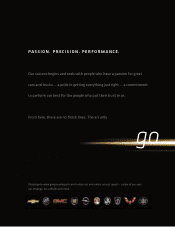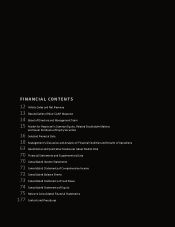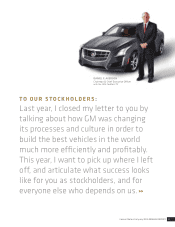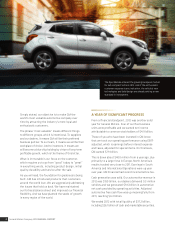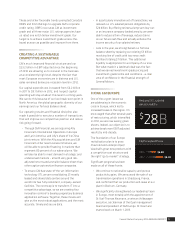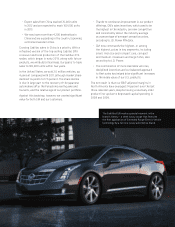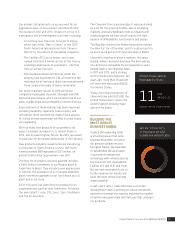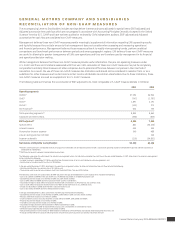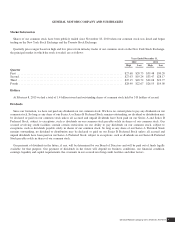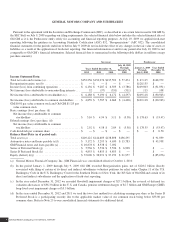General Motors 2012 Annual Report Download - page 13
Download and view the complete annual report
Please find page 13 of the 2012 General Motors annual report below. You can navigate through the pages in the report by either clicking on the pages listed below, or by using the keyword search tool below to find specific information within the annual report.
General Motors Company 2012 ANNUAL REPORT
10
That work continues, and it has been complemented
by changes to our design and engineering organization
that have flattened the structure and created more
accountability for product execution, profitability and
customer satisfaction.
We’re also providing our product teams with much more
detailed and insightful financial analysis. Over time, we
will be able to track the profitability of vehicles we build
down to the serial number, which will help us prioritize
capital allocations and other investment decisions.
Ultimately, these insights will help us become far more
strategic about product development, component
sourcing and manufacturing decisions, which in turn
will help us drive down costs.
Product quality and long-term durability are two other
areas that demand our unrelenting attention, even
though we are doing well on key measures.
For example, we earned our best-ever results in J.D. Power
and Associates’ 2012 Initial Quality Study. In addition,
11 GM models were ranked in the top three of their
segments in the 2013 J.D. Power Vehicle Dependability
Study, which tracks the performance of three-year-old
vehicles. Chevrolet and GMC swept the large pickup
segment. This is all good. But it’s not enough.
Internal and external studies prove that long-term
durability is hardwired to customer retention rates,
and retention drives profitability. For example,
we conservatively estimate a one percentage
point improvement in GM loyalty rates in the
United States would deliver about $700 million in
incremental revenue. To capture this revenue, our
teams are working hard to further improve customer
satisfaction and quality.
Of course, none of the issues I have outlined are new
challenges. But they are controllable, and every dollar
of incremental revenue or avoided cost brings us
closer to our objective of becoming the world’s most
valuable automotive company. All of it is achievable.
BECOMING THE WORLD’S MOST
VALUABLE AUTOMOTIVE COMPANY
In closing, I want to share my perspective on the U.S.
government’s gradual sell-down of its ownership
stake in GM, which was announced at the end of
2012. It echoes a message I shared with the GM
team on the day we announced our plan to return
more than $5 billion in capital to the U.S. Treasury by
repurchasing 200 million shares of common stock.
It has never been far from my mind that U.S. and
Canadian taxpayers rightfully expected us to change
the way we do business in exchange for a second
chance. That is exactly what we are doing.
Today’s GM has changed in profound ways:
• We are transforming our financial systems and
strengthening our risk management function
processes while simultaneously reducing our pension
obligations and closing competitive gaps.
“We are designing products to win
in the marketplace, not just compete,
and we’re aggressively pursuing growth
opportunities around the world.”



